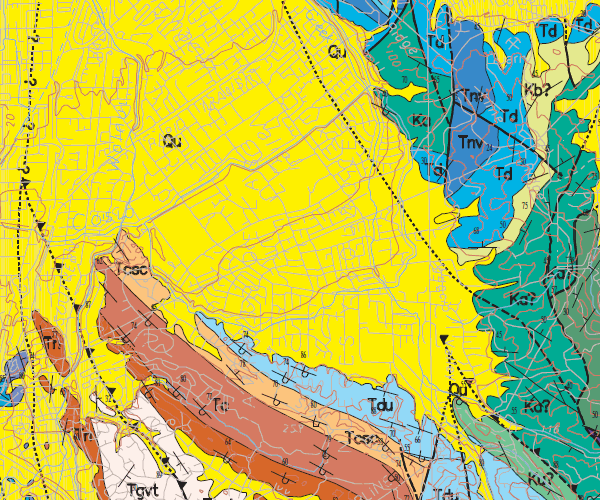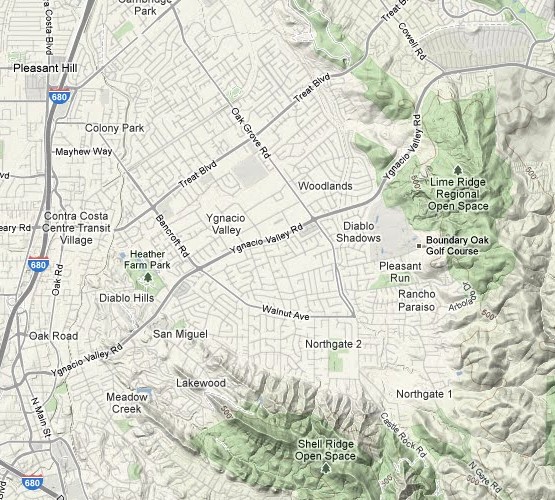We see the creek (Arroyo de las Nueces) on the west, Shell Ridge on the south, Ygnacio Valley in the middle, and Lime Ridge (mapped as Sierra de los Golgones) on the east. What's that notation at the end of Shell Ridge? Let's zoom in.

The "warm sulphur spring" was where Ygnacio Sibrian, Doña Juana's son, established Sulpher [sic] Springs Ranch on his share of the Rancho San Miguel. The official records put "Sulpher Springs" a bit north of Heather Farms, but U.S. Geological Survey Water-Supply Paper 338, Springs of California, offers the following description of the springs as of 1915:
"A group of sulphur springs lies near the northeastern base of a low ridge about 2 miles northeast of the town of Walnut Creek. The largest spring is on the ridge about 100 yards from its eastern base and 25 yards north of the county road [Ygnacio Valley Road]. When the place was visited, the water rose in a board-curbed pool protected by a latticed house and was piped to a cattle trough a few yards away. It yielded about 3 gallons a minute of mildly sulphureted water, 81° in temperature. . . . Five other smaller springs issue in a belt extending 350 yards along the base of the ridge, in and near the barnyard of Sulphur Springs farm. Two of them have been piped to watering troughs near by. The other three are of seeping flow and form only small marshy places."
From that description, the spring was closer to where Clarke Swim Center sits today in Heather Farm Park, another health-centered water attraction.
Rotten-egg smell is hydrogen sulfide gas (H2S), produced by certain bacteria from sulfur minerals in the absence of oxygen. Normally H2S is quickly oxidized by another set of bacteria into H2SO4, sulfuric acid, which proceeds to eat away at limestone and other rocks. But if the gas can move quickly to the surface it can reach your nose. Such is the case at Shell Ridge, as the Contra Costa County geologic map shows.

Shell Ridge consists of the following rock units, in order of age: upper Domengine Formation (Tdu), Cierbo Formation (Tc, with sandstone/conglomerate (Tcsc) at the base), Neroly Formation (Tn), and Green Valley/Tassajara group (Tgvt). The strike-and-dip symbols show that the rocks are actually overturned—tilted beyond vertical.
What is sulfur doing in Walnut Creek's rocks? Sulfur minerals, mostly gypsum (CaSO4·2H2O) or pyrite (FeS2), are widespread in sedimentary rocks. Around here, the sulfur is pyrite associated with organic matter, and the Domengine Formation in particular is a well-known petroleum reservoir rock. It stands to reason that a suitable set of cracks would support a sulfur spring here. The smell of rotten eggs used to be considered part of the healthful power of a warm spring. Savor that as you visit the hospital today.




